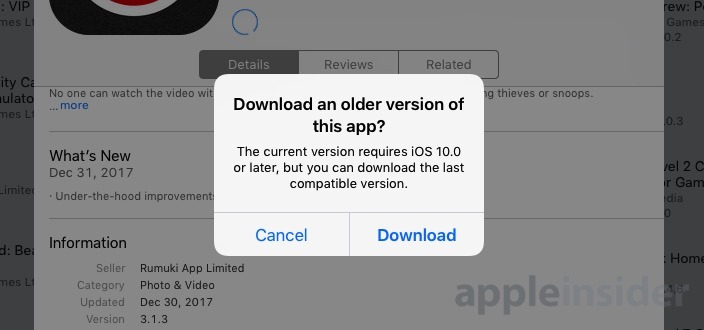
Apple is bridging iOS and macOS with a new breed of apps that work across both platforms. At WWDC, Apple unveiled a suite of new Mac apps including News, Stocks, Home and Voice Memos. Apple detailed right now how its new Apple Silicon Macs would be capable of run a wider vary of apps than earlier than, even when an iOS developer hasn’t launched a Mac-compatible model iOS apps can run on Apple’s new Apple Silicon Macs – ProWellTech - Techvibe.
Apple detailed today how its new Apple Silicon Macs would be capable of running a wider range of apps than before, even in the case where an iOS developer hasn't released a Mac -compatible version of their mobile experience. The company said macOS Big Sur on its new Macs would support universal apps -- which include the native binary version built for the Apple Silicon and the one for Intel Macs -- as well as other apps that hadn't yet upgraded to universal.
That means the new Macs can, for the first time ever, run users' iPhone and iPad apps, Apple said. This change will expand the selection of apps available for Mac devices.
Apple explained how this this is all possible during its event. It said a new technology called Rosetta 2 would help M1 -- the first member of the company's Apple Silicon family -- to run apps built for Intel-based Macs. Apple even noted that some apps would run better using Rosetta 2 than they did on Intel.
Also during its event today, Apple showed off iPhone and iPad apps like HBO Max and Among Us running on its new Silicon Macs.
However, as a report from 9to5Mac pointed out earlier, Apple appeared to be allowing developers to opt out of its new unified app store. Among the developers it found who were not offering their apps on the new Mac App Store for Apple Silicon Macs, were Google (Gmail, Drive, Maps), Facebook (Facebook, Instagram, Messenger, WhatsApp), Amazon (Prime Video), Snapchat, and Disney+.
But these opt-outs may be a temporary measure.
Apple additionally talked about universal apps -- meaning those built for both Apple Silicon and Intel processors -- in more detail. Among the first to launch universal apps are companies like Omni Group and Adobe. In Adobe's case, it will offer a universal version of Lightroom next month, and Photoshop early next year.
Universal apps can be downloaded both from the App Store and the web, Apple noted.
Of course, Apple has optimized all its apps for M1, as well, including every app that comes with macOS, to all the other apps it publishes like Pages, Numbers, Keynote, GarageBand, iMovie, LogicPro, and Final Cut Pro.
© Provided by TechCrunchDisclaimer
This article is intended for educational purposes only, to demonstrate that it’s possible to test out iOS applications with Xcode without having to buy a Mac. However, you should consider testing on a real MacOS device before publishing your application on the App Store.
All the Steps to Get Your First 'Mac'
OK, now let’s discover how a 'Mac' is made.
Requirements
You’ll need a computer running Windows or Linux (not tested) and an iOS device (iPad or iPhone). Also required:
- VMWare or VirtualBox
- USB 2.0, not 3.0
- An Apple Developer account
- Xcode 10.1 (no other versions)
VMWare or VirtualBox?
After having tested various MacOS versions on different virtual machine systems like VMWare and VirtualBox, I found that the quickest solution was VMWare Player 15 with High Sierra 10.13.
Newer versions of MacOS drastically reduce the performance of the system, probably due to newer graphic drivers that aren’t 100% compatible with VM software.
First steps
The first step is to install your VM:
Use Ios Apps On Mac
Switch USB
After your VM is fully connected and active, you’ll want to try out the connection to a real-world iOS device.
On VMWare, you have to switch the USB mode from 3.0 to 2.0 to let the 'Mac' see your Apple device.
Once you have that handled, reboot the VM and connect the device while opening iTunes inside the VM. After a few seconds, you should see the device pairing to it.

Apple Developer account
Next you’ll need to prepare your Apple Developer account. Don’t worry, it’s free while you’re testing applications on your local device. You only have to pay to publish your app on the App Store.
- Register at developer.apple.com
- Login and proceed to developer.apple.com/download/more/
- Search for Xcode 10.1 and download this XCode zip file, around 5.6GB
- Unzip the file and move the App file to the Applications folder.
Xcode version must be 10.1
You should never download any version of Xcode except 10.1.
This is because newer versions aren’t supported on High Sierra 10.13.6. Some people have been able to use the newest version, but it would require modifying some app files and would just make it harder.
If you get the 10.1 version, however, you’ll be ready to code in a few minutes instead of a few hours.
Get some support
There’s a downside to using Xcode 10.1.
New iOS versions, like iOS 12 or 13, aren’t supported on it. So if you try to run your app on an iPhone with iOS 13, you’ll get a warning that it can’t install on that device.
Luckily there is a really simple fix thanks to this awesome repository on Github. Open up your terminal and type these commands:
Easy!
The Magic Trick Is Complete! Your Personal MacOS Running is Inside Your Preferred OS
Can Macos Run Ios Apps
